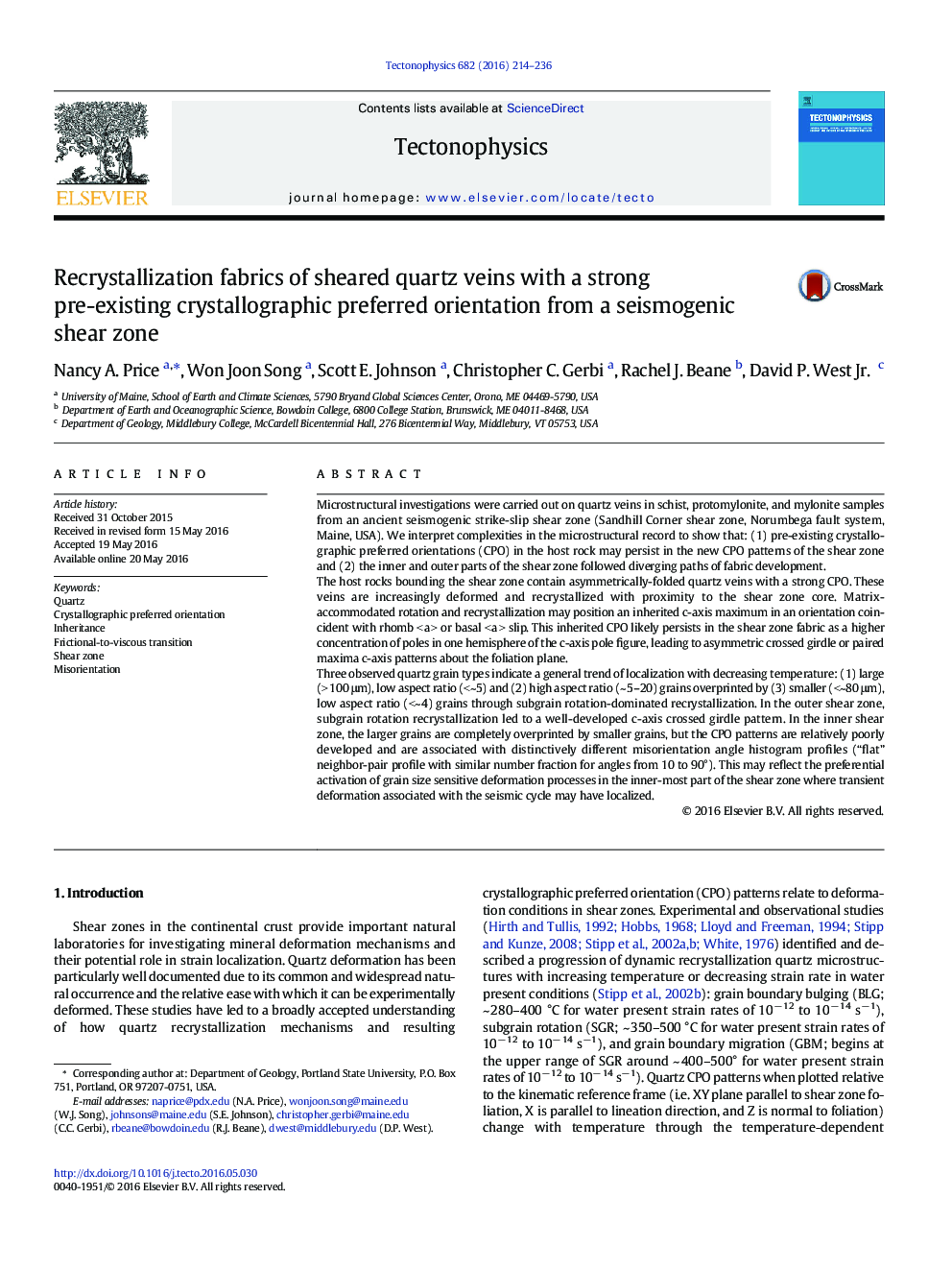| کد مقاله | کد نشریه | سال انتشار | مقاله انگلیسی | نسخه تمام متن |
|---|---|---|---|---|
| 4691314 | 1636716 | 2016 | 23 صفحه PDF | دانلود رایگان |
• Quartz microstructure/orientation data from a seismogenic shear zone are described.
• Inherited quartz fabrics form an asymmetry in c-axis pole figures of sheared veins.
• A shift to SGR caused a spatially-dependent change in quartz grain types.
• Uncommon microstructures and data suggest that quartz was affected by the seismic cycle.
Microstructural investigations were carried out on quartz veins in schist, protomylonite, and mylonite samples from an ancient seismogenic strike-slip shear zone (Sandhill Corner shear zone, Norumbega fault system, Maine, USA). We interpret complexities in the microstructural record to show that: (1) pre-existing crystallographic preferred orientations (CPO) in the host rock may persist in the new CPO patterns of the shear zone and (2) the inner and outer parts of the shear zone followed diverging paths of fabric development.The host rocks bounding the shear zone contain asymmetrically-folded quartz veins with a strong CPO. These veins are increasingly deformed and recrystallized with proximity to the shear zone core. Matrix-accommodated rotation and recrystallization may position an inherited c-axis maximum in an orientation coincident with rhomb < a > or basal < a > slip. This inherited CPO likely persists in the shear zone fabric as a higher concentration of poles in one hemisphere of the c-axis pole figure, leading to asymmetric crossed girdle or paired maxima c-axis patterns about the foliation plane.Three observed quartz grain types indicate a general trend of localization with decreasing temperature: (1) large (> 100 μm), low aspect ratio (<~5) and (2) high aspect ratio (~ 5–20) grains overprinted by (3) smaller (<~80 μm), low aspect ratio (<~4) grains through subgrain rotation-dominated recrystallization. In the outer shear zone, subgrain rotation recrystallization led to a well-developed c-axis crossed girdle pattern. In the inner shear zone, the larger grains are completely overprinted by smaller grains, but the CPO patterns are relatively poorly developed and are associated with distinctively different misorientation angle histogram profiles (“flat” neighbor-pair profile with similar number fraction for angles from 10 to 90°). This may reflect the preferential activation of grain size sensitive deformation processes in the inner-most part of the shear zone where transient deformation associated with the seismic cycle may have localized.
Journal: Tectonophysics - Volume 682, 6 July 2016, Pages 214–236
